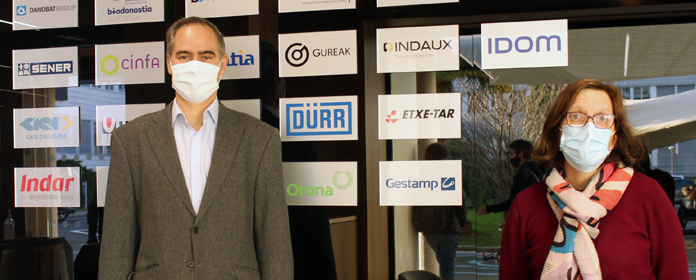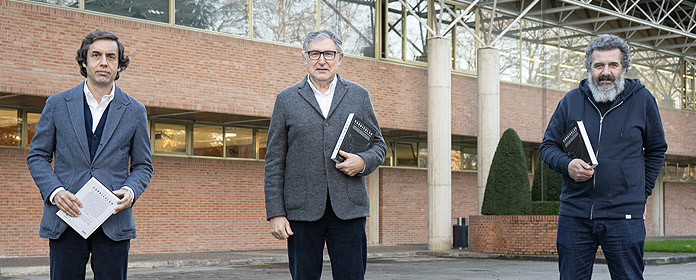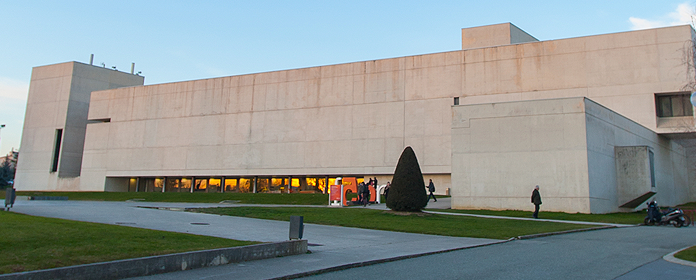Health engineers: from the therapeutic chip to maximum precision surgery
The University of Navarra launches its Master's Degree in Biomedical Engineering with the support of the University of California.
In a joint initiative of campus in Pamplona and San Sebastian, the University of Navarra will launch next academic year 2007-08 its new Master's Degree in Biomedical Engineering. It is a program directed by the technical school of Engineers in partnership with other centers of the same university: Schools of Medicine, Sciences and Pharmacy, University Clinic of Navarra, research center Applied Medicine (CIMA) and the Centerof programs of study andTechnical Research of Gipuzkoa (CEIT).
In the development and execution of project collaborates the department of Bioengineering of the University of California at Berkeley. In addition, national and international companies from the biomedical technology sector will participate in the teaching and will offer internships.
Dr. Carlos Ortiz de Solórzano, engineer and director of Master's Degree, explains some applications of biomedical engineering: "Tissue engineering techniques based on adult stem cells already shorten bone or connective tissue regeneration processes after surgery. They also improve recovery expectations in coronary ailments.
Another field concerns image acquisition and analysis techniques, which make a decisive contribution to the diagnosis and monitoring of complex diseases such as Parkinson's disease and Alzheimer's disease. In the case of assisted surgery, it brings greater precision to surgical interventions. In addition, nanotechnologies make it possible to implant devices (chips) in the human body to replace the functions lost by organs or tissues".
The director of the Master's Degree worked 8 years at Berkeley before joining the technical school of Engineers and the CIMA of the University of Navarra. After his return to Spain, Carlos Ortiz de Solórzano underlines the conditions of "this scientific environment with an integrative vocation of knowledge. As we do research to cure, we want to apply advances in areas as apparently disparate as Materials Engineering, mechanics or electronics, which offer innovative and effective alternatives to traditional methods of diagnosis and treatment of diseases".
For the presentation of the new Master's Degree, Dr. Tejal Desai, director of the laboratory of Micro and Nano Therapeutic Technologies at the University of California, San Francisco, traveled to Pamplona. Her team is working on the design of capsules containing pancreatic cells, invisible to the immune system, which can be inserted into the pancreas of diabetic patients to produce insulin. According to the researcher, "in 10 to 15 years this technique could be available at available for subject 1 diabetics, who must administer insulin. This advance would enable them to improve their quality of life and regenerate part or all of their pancreas".
Another innovative example of the research developed by Dr. Tejal's team is the fabrication of molds that allow the appropriate growth of bone cells on artificial surfaces or scaffolds that can be surgically implanted in fractures or decalcified bone areas. "This process could also be applied to soft tissues that tend to form fibrosis. The idea consists of implanting a gel with cellular regenerative factors to help the damaged tissue recover," the specialist explains.
Dr. Elena de Juan, an engineer and also director of Master's Degree, has joined the University of Navarra after her time at high school Max-Planck in Munich (Germany) and is now at research in Berkeley. She explains that, although open to a wide audience of university graduates, the Master's Degree is especially oriented to those outside the biomedical field, such as engineers, computer scientists, physicists or mathematicians. The professor staff is made up of around one hundred professionals from all the areas involved: physicians, biologists, physicists, chemists, engineers, pharmacists, biochemists, etc. They all work and develop their basic and applied research in areas of knowledge related to medicine.





